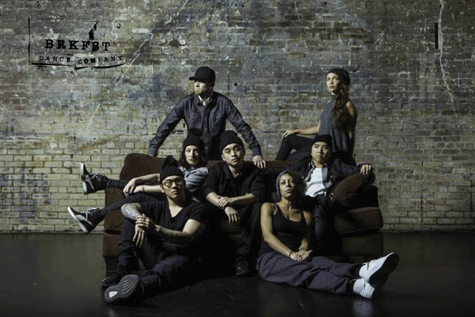by MAX SPARBER
Community News Editor
There was a brief explosion of breakdancing 35 years ago. I remember it, because I participated in it. At the time, it seemed likely that the hip hop dance form, which combined acrobatic street moved with inspirations drawn from West Coast funk dancers, Egyptian iconography and television mimes, was doomed to be a fad.

The form likely attracted too much of the wrong sort of attention too quickly. Specifically, Hollywood snapped it up, plugging it into movies like Flashdance without context, and it became a cinematic shorthand for urban, black neighborhoods.
There were a few films specifically about breakdancing, but Hollywood mostly treated the dance as atmosphere. It was reserved for cutaway shots, to establish location, along with graffiti and rap music pouring from big boom boxes.
For a while, if you weren’t paying attention (and despite having been an enthusiastic participant in high school, I wasn’t), it seemed like the world moved on. New dance fads became popular, especially in the world of hip hop, which has always been defined by its restless inventiveness.
But break dancing did what many cultural expressions do when ignored. It went underground and continued to develop, slowly turning into an international phenomenon. There are now active breakdancing scenes in Brazil, Cambodia, Japan and South Korea.
And Minnesota. Still Minnesota.
Rimon’s marvelous artists salon series will offer a sample of this on Nov. 5, presenting an excerpt from a full-length dance piece titled “Seconds” to be presented Nov. 30-Dec. 3 at the Southern Theatre in Minneapolis. After the excerpt, singer-songwriter Adam Levy will moderate a discussion with the dance troupe, called BRKFST, and, in particular, with one of the dancers and choreographers, Lisa Berman.
Berman, in her mid-30s whose Facebook page credits her as a native of St. Paul, has a long history in breakdancing. In an interview with the American Jewish World, she locates the start of her participation in the dance form with a class she took in West African dance at the University of Minnesota. “I loved it,” she says. “I loved the drumming.”
“I ended up dancing with an African company,” she continues. “I did a couple of shows with them. Someone in the hip hop world saw me perform and told me about a collective hip hop dance company. I danced with them for about five years.”
While part of this group, Berman met a handful of local breakdancers. The year was 2005, and, according to Berman, breakdancing was “really underground in Minneapolis.” She soon found out where locals practiced: The cafeteria at the Minneapolis College of Art and Design.
Since then, the local breakdancing scene has grown to having an international reputation, assisted by a few dancers whose YouTube videos attracted substantial attention, such as Minnesota Joe, the nickname for Joseph Tran, who was featured in a City Pages cover story in 2012 in which an interview subject enthused that “Minneapolis has become the new Korea,” which had previously been the go-to spot for dazzling breakdancers.
This year, Berman cofounded a new dance company — an April interview on the nonprofit arts organization COMPAS’s website has it then-named “In New Company,” but it has since morphed into BRKFST.
This seven-member troupe creates the projects collaboratively, and Berman discusses the challenges in adapting breakdancing to the stage. The forms was designed for short dance battles, “a sprint and “explosive” is how Berman phrases it. But with a 50-minute program, the troupe has been forced to figure out how to represent that same energy onstage in the context of a longer program with the structural elements of a full dance recital.
The troupe’s solution has been, in part, to draw from each member’s additional dance experiences. “Once dancer has a background in martial arts,” Berman explains, so their dancing incorporates martial arts moves. Another has a background in contemporary dance, so they will incorporate contemporary dance elements.”
Berman is quick to point out that this is not in the service of creating a hybrid dance form. “We’re not trying to change the movement,” she says. “We’re not trying to create a hybrid dance.”
“We’re exploring how breakdance can be innovated for the stage,” she explains.
***
Lisa Berman and BRKFST will be featured in the next Rimon Artist Salon 1 p.m. Sunday, Nov. 5 at The Cowles Center for Dance, 528 Hennepin Ave., Mpls. For information, call 952-381-3449 or email: rimon@sabesjcc.org.,
(American Jewish World, 10.20.17)



















